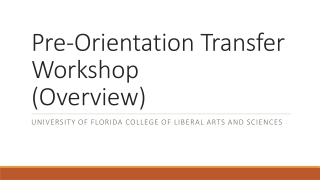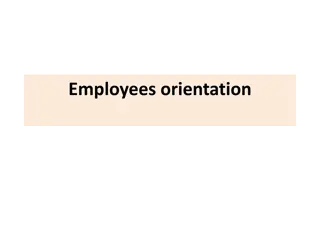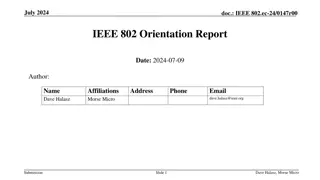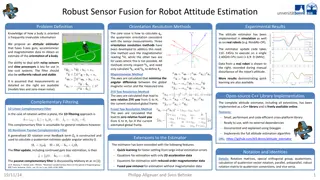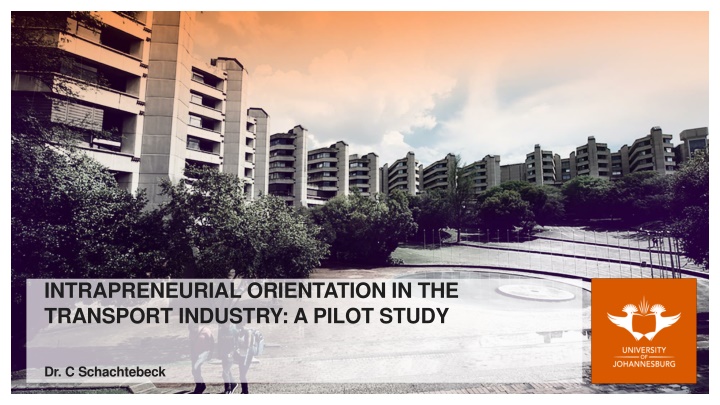
Exploring Intrapreneurial Orientation in the Transport Industry: Pilot Study
"Discover the importance of Intrapreneurial Orientation (IO) in the South African transport industry through a pilot study focusing on employees' predisposition towards entrepreneurship, innovation, and risk-taking. Learn how intrapreneurship can drive organizational growth and competitiveness while addressing the lack of entrepreneurial spirit in the industry."
Download Presentation

Please find below an Image/Link to download the presentation.
The content on the website is provided AS IS for your information and personal use only. It may not be sold, licensed, or shared on other websites without obtaining consent from the author. If you encounter any issues during the download, it is possible that the publisher has removed the file from their server.
You are allowed to download the files provided on this website for personal or commercial use, subject to the condition that they are used lawfully. All files are the property of their respective owners.
The content on the website is provided AS IS for your information and personal use only. It may not be sold, licensed, or shared on other websites without obtaining consent from the author.
E N D
Presentation Transcript
INTRAPRENEURIAL ORIENTATION IN THE TRANSPORT INDUSTRY: A PILOT STUDY Dr. C Schachtebeck
INTRODUCTION Entrepreneurship - an engine for innovation, organisational growth, employment creation Importance of creating SMEs widely acknowledged Beneficial nature of entrepreneurial actions by existing employees, a.k.a. corporate entrepreneurship or intrapreneurship, is underappreciated Current studies connect intrapreneurship to achievement of organisational objectives Intrapreneurship at the organisational level has been explored in some detail, not at the employee level Entrepreneurial actions by employees are referred to as an employee s Intrapreneurial Orientation (IO) an individual employee s predisposition to accept entrepreneurial processes, practices and decision-making characterised by a preference for innovativeness, risk-taking and proactiveness Little research conducted in South Africa in this field Despite the transport industry experiencing high levels of business failures, mainly attributable to a lack of entrepreneurial spirit, no study to date has attempted to investigate the IO in this industry 2
RESEARCH AIMS To generate preliminary insights into levels of Intrapreneurial Orientation in the South African transport industry, from the perspective of employees. Piloting an adapted measuring instrument by assessing practicality, reliability and implementation issues. 3
LITERARY OVERVIEW Entrepreneurship A person who sees an opportunity in the market, gathers resources and creates and grows a business venture to satisfy these needs. He/she takes the risk of the venture is rewarded with profit if it succeeds A person who seeks to generate economic and social value through the creation or expansion of economic activity, by identifying and exploiting opportunities for new products, processes, markets and for meeting outstanding social and environmental needs Contribution to GDP Majority of SMEs fail within the first two years of operation, with only 25% surviving for a period longer than two years Entrepreneurial Employee Activity, is amongst the lowest in the world, at 0.7% 4
LITERARY OVERVIEW Intrapreneurship Viewed in same light as entrepreneurship, but performed internally in an organisation Regarded as a semi-autonomous group operating within the overarching structure of the parent organisation Improves performance and enhances competitive positioning Allows innovation and entrepreneurial practices to be weaved into day-to-day processes, by adopting best practices and improving internal responsiveness Enhances organisational growth, internal performance, profitability and strategic renewal Efforts need to be operationalized 5
Environment Dynamism Technological Opportunities Industry Growth Demand for New Products Intrapreneurship Unfavorability of Change Performance New Business Venturing Competitive Rivalry Growth Innovativeness Profitability Self-renewal Organization Proactiveness Communication Formal Controls Environmental Scanning Organizational Support Competition-related Values Person-related Values 6
LITERARY OVERVIEW Intrapreneurial Orientation (IO) Evolved from the Entrepreneurial Orientation (EO) concept EO = a strategy-making process that aims to inspire entrepreneurial actions within an organisation, usually in the form of policies and practices that provide a basis for entrepreneurial decisions and actions EO = usually at the organisational-level through policies and SOPs Characterised by risk-taking, proactiveness, innovativeness, competitive aggressiveness and autonomy IO = entrepreneurial ambitions of the individual employee Employees become an integral component of internal innovation efforts Implementation of IO a fusion between Industrial Psychology and entrepreneurship Implementation of IO also depends on EO policies and practices Same 5 components, but important role of management added Required managerial tasks include: goal setting, rewards and innovation systems, Intracapital, effective two- way communication, intrapreneurship championing, staff input, intrapreneurial freedom 7 Source: Gupta & Adil (2014)
METHODOLOGY Quantitative Research, pilot study, using a newly developed measuring instrument Main constructs in instrument split into managerial factors and personal factors (risk-taking, proactiveness, innovativeness, personal control, self-esteem and achievement orientation). Also contained eight growth variables 5 point Likert-scale Four piloting principles were followed to ensure methodological correctness. 1. stating the purpose of the study clearly, 2. ensuring population representativeness and testing procedural elements, 3. accurate reporting of outcomes, 4. participants drawn from the population under investigation Random sampling approach in online databases Questionnaires distributed online and by hand Analysed in SPSS Tests for reliability, descriptive statistics (means and standard deviations) 8
Findings 30 responses (21 male and 9 female) Most respondents below the age of 40 and located in Gauteng Most working in an SME with more than 51 employees Results w.r.t. piloting principles Population representativeness met drawn from target population Outcomes reported in next slide Problems encountered with procedural and administrative elements: length of the questionnaire, difficult phrasing of some questions (can be due to adaptation from international instruments). Administration issues: response rates from online surveys was low, paper-based questionnaire recording higher response rates (due to lack of internet access and low rates of engagement with the instrument) 9
Findings reliability Construct Number of Items Mean Inter-Item Correlation Cronbach s Alpha 0.626 4 0.294 Risk-taking 0.685 4 0.354 Innovativeness 0.760 5 0.397 Proactiveness 0.662 4 0.333 Achievement Orientation (AO) 0.528 4 0.278 Self-esteem (SE) 0.708 4 0.384 Personal control (PC) 0.829 8 0.392 Growth 0.873 14 0.331 Management 10
Findings descriptive statistics Construct Mean Standard Deviation 3.92 1.05 Risk-taking 4.01 0.96 Innovativeness 4.29 0.85 Proactiveness 4.45 0.83 Achievement Orientation (AO) 4.35 0.89 Self-esteem (SE) 4.36 0.87 Personal control (PC) 3.90 1.07 Growth 3.81 1.22 Management 11
CONCLUSION Findings of this study revealed moderate to high levels of risk-taking propensity, managerial support, proactiveness, personal control, self-esteem, autonomy and innovativeness. Can inform decision on future large-scale studies, procedural elements for noting or amendment, as well as confirms usability of the newly developed measuring instrument Value for academia: initial insight into the IO phenomenon and expands on the existing body of knowledge. The measuring instrument can provide the basis for other studies In practice, provides insights and instrument can also be utilised in industry to identify and pinpoint areas of concern and improvement Recommendations Test on larger sample Test pre-and post-IO implementation Conduct studies in other emerging markets Make changes to management of employees and IO efforts/implementation 12


